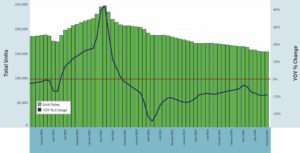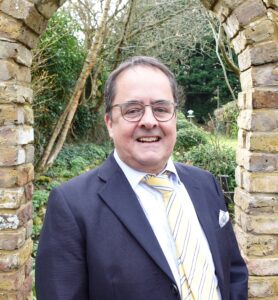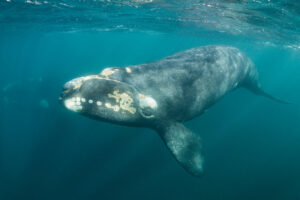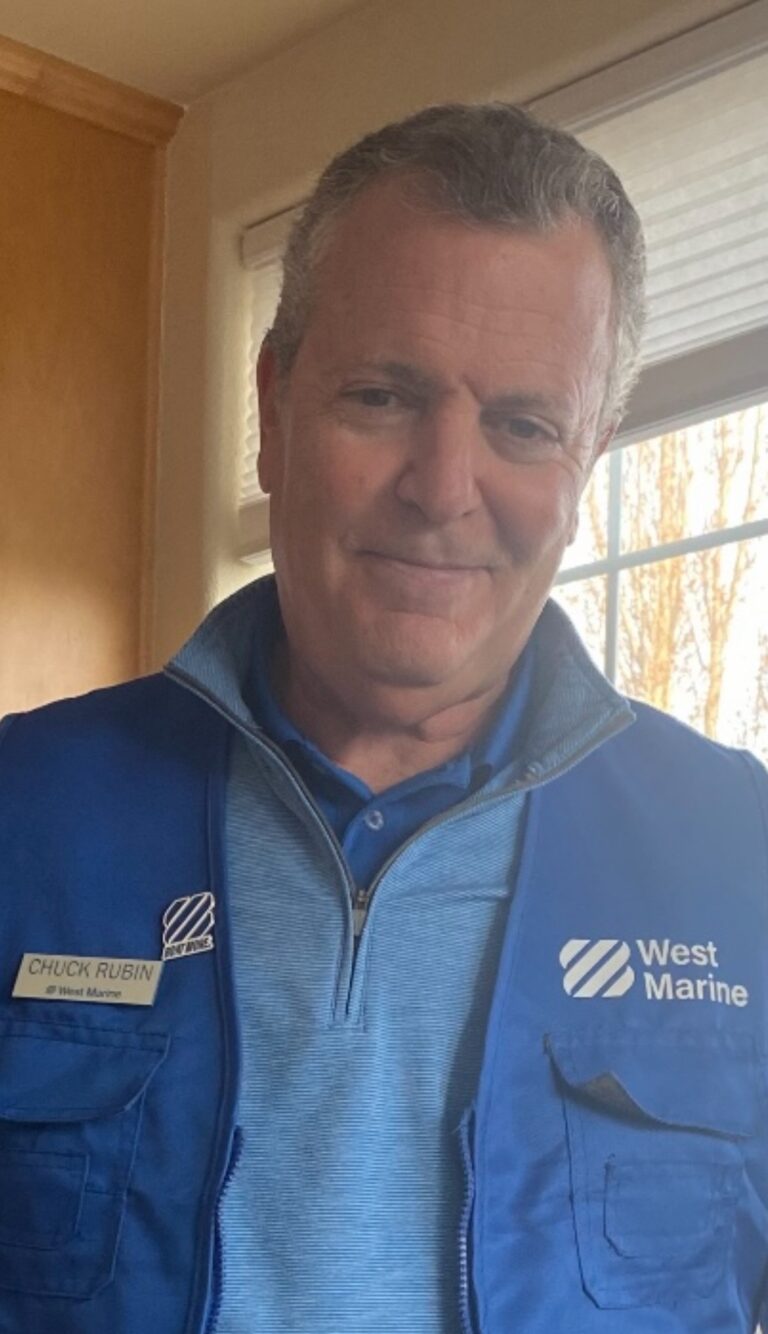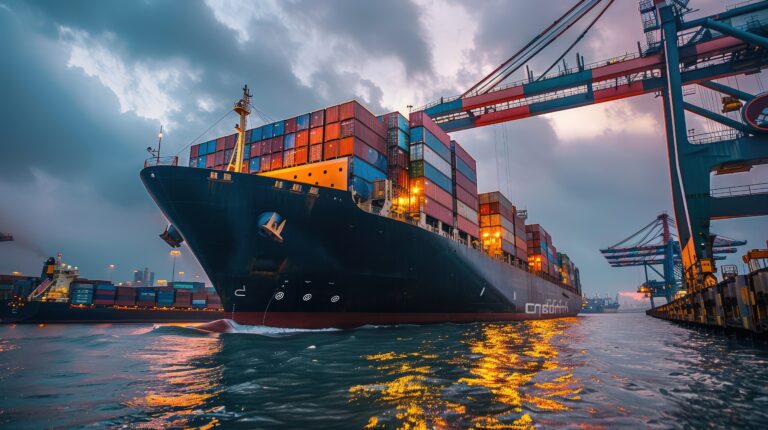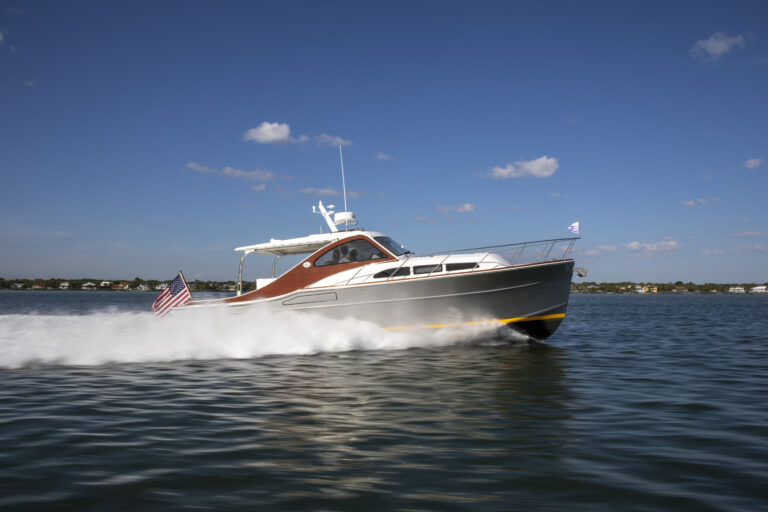
Florida’s Miami-to-Orlando high-speed passenger train hasn’t left the station and marina owner Bill Biggs would like to derail it before it builds up a head of steam.
All Aboard Florida, the $1.5 billion “express” rail service proposed for the Florida East Coast rail corridor, would start in Miami and end at Orlando International Airport, with intermediate stops in Fort Lauderdale and West Palm Beach. Florida East Coast Industries, AAF’s parent company, says the project will provide a big boost to Florida’s economy: $6.4 billion in direct economic impact over eight years, 10,000 jobs a year during rail line construction and 5,000 jobs a year after the construction is finished.
But at what cost? Biggs and others say the rail service — 32 trains a day — will run roughshod through the Florida coastal communities it transits.
“I’m not against commerce, but they need to come up with a better plan that can work and doesn’t destroy other businesses along the way,” says Biggs, managing principal of Riverwatch Marina & Boatyard in Stuart, Fla., on the St. Lucie River.
He says the rail service would be the kiss of death for marinas, boatyards and yacht builders west of the Florida East Coast Railroad drawbridge on the river, which is the east end of the Okeechobee Waterway running across Florida from the Gulf of Mexico to the Atlantic Ocean. The bridge has a closed vertical clearance of just 7 feet, and businesses upriver depend on it being open for their boat traffic, not to mention vessels — commercial and recreational — that use the cross-Florida waterway.
Riverwatch, builder American Custom Marine, Sovereign Marine Group, Allied Marine, HMY Yachts, MarineMax, Sunset Bay Marina and many yacht clubs and residential docks would be affected.
“We’re very much opposed to this,” Biggs says.
The problem: AAF proposes to operate hourly service from 6 a.m. to 9 p.m., with 16 trains running in each direction daily — 32 a day. That’s probably two an hour crossing the St. Lucie railroad bridge, and it doesn’t include the freight trains from the ports of Miami, Fort Lauderdale, Jacksonville and other cities that use the FEC tracks.
The typical wait time for a boat when the St. Lucie railroad bridge is down is 20 minutes, but “at times you have to wait over an hour at the bridge,” says K.C. Traylor, a boater and founder of Floridanotallaboard.net, a group that has collected 17,000 signatures in a petition drive to quash the train service or move it west, beyond heavily populated coastal regions of the state where people live, work and use their boats.
Boaters and marine businesses on Fort Lauderdale’s New River, Jupiter’s Loxahatchee River and Stuart’s St. Lucie stand to be most directly affected by the dramatically increased train traffic on the drawbridges, Traylor says. Using a fixed video camera, the Jupiter Inlet Navigation District counted 8,000 boats passing under the Loxahatchee bridge over a month-long period during May and June, she says. The bridge closed for an average of 19 minutes or so for each train, but one time it closed for about an hour.
In Stuart and Jupiter, “when the railroad bridge is down, you can’t fit a boat with a Bimini under it because the tracks are too low,” says Bill Begley, owner of NTB Yacht LLC, a Jupiter, Fla., brokerage. “The number of openings and closings of [road crossing] gates and bridges — based on the number of trips [AAF] plans to make — would add 30 [or more] closings in a day.”
Traylor says the high-speed service — as proposed — bisects established coastal communities and causes disruptions, not just to boat traffic but also to vehicular traffic, and brings with it noise pollution, more traffic congestion, safety concerns at crossings, devaluation of homes along the corridor, longer emergency response times and tens of millions of local dollars spent on improving road crossings for a high-speed train.
“These tracks were built over 100 years ago,” she says. Where they once may have run along the town’s edge, now “they bisect many of our communities.”
AAF has ambitious plans for the train stations in Miami, Fort Lauderdale, West Palm Beach and Orlando. It says the downtown Miami station will be an “iconic gateway” encompassing a “multimodal transportation hub” and 3 million square feet of mixed-use residential, office, commercial, hospitality, and retail space. Traylor says the trains may benefit the cities where they stop, but the communities in between will see only a negative effect on their quality of life.
“They’re not going to see those benefits,” she says.
AAF says the trains will serve tourists, business travelers and Florida residents, making the trip between Miami and Orlando in three hours. The trains will operate at speeds of as much as 79 mph from Miami to West Palm Beach, 110 mph from West Palm Beach to Cocoa and 125 mph from Cocoa — where the route turns west — to Orlando. The passenger trains would operate on 195 miles of existing FEC rail corridor along the East Coast, many parts requiring construction of a second track, and a new rail corridor on state-owned right of way along east-west Route 528 from Cocoa to Orlando.
The Washington Economics Group Inc., a Florida-based consulting firm led by economist Tony Villamil, reports in a study commissioned by AAF that $2 billion in economic impact and job creation from the construction of the rail line will be spread across all eight counties through which the line will travel.
“All Aboard Florida will serve the transportation needs of the 9 million residents along the corridor, along with the 50 million who already travel between and within the project’s planned route on an annual basis,” AAF says in a press release touting the economic benefits of the project.
It says AAF represents two complementary businesses — the passenger rail service and commercial development at the stations. AAF will improve Florida’s railroad infrastructure, remove 3 million vehicles from Florida roads, revitalize downtown centers in Miami, Florida and West Palm Beach and boost tourism in a state that projects 100 million visitors a year by 2030, the company says. It foresees that 74 percent of riders —12,800 a day, 400 a train — will be “leisure travelers.”
The marine industry is pressing for changes in the rail plan to reduce the impact on boat traffic on the New, St. Lucie and Loxahatchee rivers. In a letter to the Federal Railway Administration, Marine Industries Association of South Florida president Kristina Hebert writes that a 2009 study of rail traffic in Broward County showed that freight trains already shut down the New River bridge for six hours a day.
“Our concern is that the additional proposed rail traffic of 32 passenger trains per day, combined with the planned increased freight traffic generated by the new intermodal in Miami, as well as the on-dock transfer station in Port Everglades, will combine to create the cumulative effect of virtually closing navigational access to the New River.”
The MIASF, based in Fort Lauderdale, wants a guarantee from AAF that — barring emergencies — the New River bridge will remain open at least 40 minutes each hour so that boats and megayachts, many of them under tow, can get into and out of upriver boatyards and marinas relatively freely, says executive director Phil Purcell.
Purcell thinks it’s doable if AAF schedules incoming and outgoing trains to pass over the bridge about the same time each hour, puts a tender on the bridge to raise and lower it (currently that’s done from Jacksonville) and employs “positive train control,” a system for safely and precisely controlling the trains. He also wants electronic signage up and down the river to tell boaters when the next closing is.
“We must have some predictability,” Purcell says, and a commitment to limit interference with navigation.
Farther north, Biggs proposes that the trains divert from the FEC tracks at West Palm Beach to CSX tracks that run farther west, mainly through farmland, and return to the FEC tracks at a junction in Vero Beach so the trains bypass the Loxahatchee and St. Lucie bridges and the heavily populated corridor between West Palm Beach and Vero. It would add maybe 30 miles to the trip.
“That’s not going to resolve all the issues, but it resolves a huge part of them,” he says.
Traylor would have AAF lease the CSX tracks all the way to Orlando and avoid Martin, St. Lucie, Indian River and Brevard counties altogether, “but they’re not considering that option,” she says. AAF presents itself as a privately owned, operated and maintained rail service, but Traylor says the company is applying for a loan from the Federal Railway Administration to finance the bulk of the project.
“I don’t see how it’s going to be feasible,” she says. “There are no profitable rail passenger lines in North America.” She says there are just two of them in the world — France and Japan.
“This will be a boondoggle,” she predicts. “The $1.5 billion is just the start.”
AAF’s parent company, Florida East Coast Industries, and Florida East Coast Railroad, which carries freight on the FEC corridor, are owned by Fortress Investment Group, an investment management company. Whether the passenger service flies or not, Traylor says, funds to improve and double-track the FEC corridor for the passenger service also would improve the corridor for an anticipated 30 percent increase in freight once the ports of Miami and Port Everglades are upgraded to accommodate the super-size Panamax container ships transiting the newer, bigger Panama Canal locks, starting in 2016. That is the same time AAF is scheduled to come on line.
The Federal Railway Administration is preparing a long-awaited environmental impact statement for the northern part of the project. The report has been pushed back to a late-summer publication date. The agency will evaluate alternatives for construction and operation of the passenger line from West Palm Beach to Orlando, including not building it at all.
The public will have at least 30 days to comment on the study after it comes out, but opponents are calling for an extension of the comment period to 90 days. AAF has said it would be willing to extend the period to 75 days.
“The EIS will be the focal point [for further discussion],” says Mark Crosley, the Florida Inland Navigation District’s executive director. “When that finally comes out, hopefully people will go through it with a fine-tooth comb and we can ask more questions.”
Service for All Aboard Florida is scheduled to begin before the end of 2016.
This article originally appeared in the August 2014 issue.


